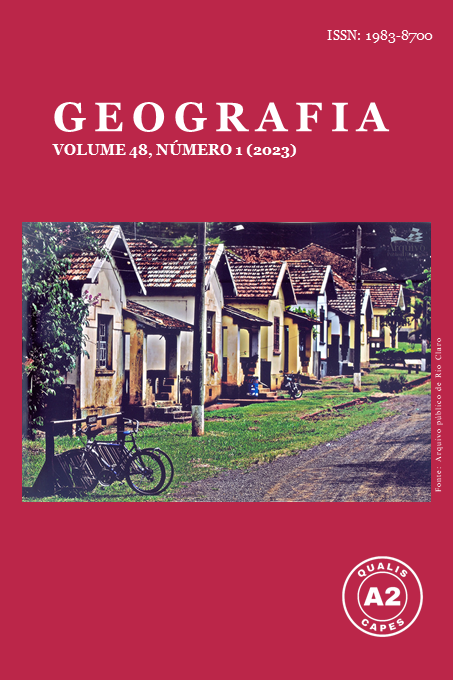PRIORITIZATION OF BUS ROUTES FOR ELECTRICATION IN THE CITY OF FORTALEZA BASED ON MULTI-CRITERIA AND GIS ANALYSIS
DOI:
https://doi.org/10.5016/geografia.v48i1.17240Abstract
Public transportation electromobility generates low or no emission of polluting gases; however, the limited autonomy of batteries, long charging time and high acquisition cost hinder the adoption of this technology. Given this scenario, this study seeks to prioritize bus routes in the city of Fortaleza, Brazil, for electrification, considering demand/supply, environmental and social criteria, by integrating multicriteria and GIS analysis. GTFS data from November 2018 were collected and processed using QGIS software. A total of 10 sub-criteria were considered: Route Demand, Line/Route Length, Operating Fleet, Travel Time, Number of Daily Trips, Terminal Area, Distance from Terminal to Power Substation, CO2 Emission, Total Population (on Neighborhoods) and Population Income Level. The weights assigned to the sub-criteria by the MACBETH method were used in the TOPSIS algorithm for route hierarchization. Electrification of the 10 priority routes could reduce CO2 emissions by 13%.
Downloads
Published
Issue
Section
License
Copyright (c) 2023 GEOGRAFIA

This work is licensed under a Creative Commons Attribution 4.0 International License.
The authors maintain the copyright and grant GEOGRAFIA the right of first publication, with the articles simultaneously licensed under the Creative Commons BY 4.0 License, which allows sharing and adapting the articles for any purpose, as long as appropriate credits and provisions of image rights, privacy or moral rights. Other legal attributions can be accessed at: https://creativecommons.org/licenses/by/4.0/legalcode.en.
Geography, Rio Claro, SP, Brazil - eISSN 1983-8700 is licensed under the Creative Commons BY 4.0 License.





